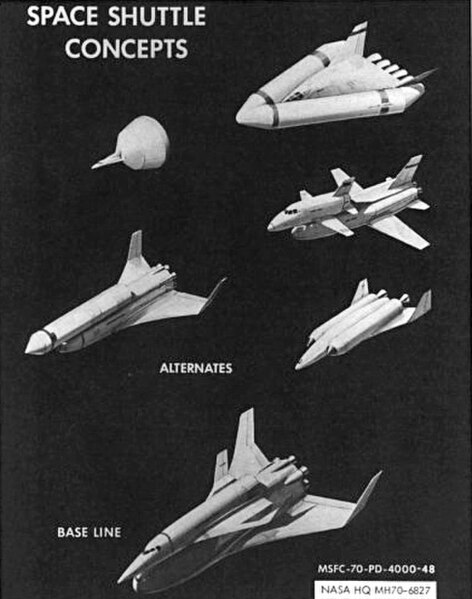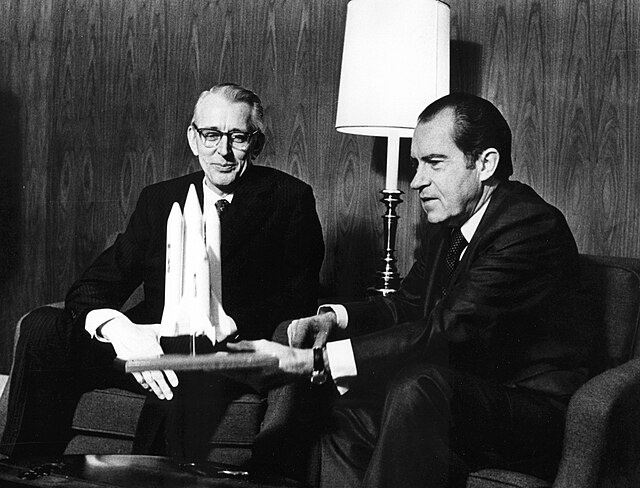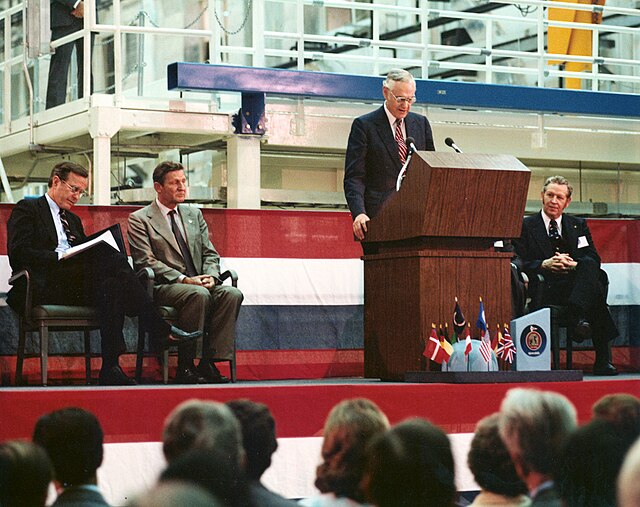The Space Shuttle program was the fourth human spaceflight program carried out by the U.S. National Aeronautics and Space Administration (NASA), which accomplished routine transportation for Earth-to-orbit crew and cargo from 1981 to 2011. Its official name, Space Transportation System (STS), was taken from a 1969 plan for a system of reusable spacecraft of which it was the only item funded for development. It flew 135 missions and carried 355 astronauts from 16 countries, many on multiple trips.
Early U.S. space shuttle concepts
President Richard Nixon (right) with NASA Administrator James Fletcher in January 1972, three months before Congress approved funding for the Shuttle program
Shuttle approach and landing test crews, 1976
NASA Administrator address the crowd at the Spacelab arrival ceremony in February 1982. On the podium with him is then-Vice President George Bush, the director general of European Space Agency (ESA), Eric Quistgaard, and director of Kennedy Space Center Richard G. Smith
Space Transportation System
The Space Transportation System (STS), also known internally to NASA as the Integrated Program Plan (IPP), was a proposed system of reusable crewed space vehicles envisioned in 1969 to support extended operations beyond the Apollo program. The purpose of the system was two-fold: to reduce the cost of spaceflight by replacing the current method of launching capsules on expendable rockets with reusable spacecraft; and to support ambitious follow-on programs including permanent orbiting space stations around Earth and the Moon, and a human landing mission to Mars.
1970 artist's concept illustrating use of a Space Shuttle, Nuclear Shuttle, and Space Tug
Nuclear Ferry and Shuttle Orbiter docked to an Orbital Propellant Depot
Early North American Rockwell shuttle concept, 1969
1971 Marshall Space Flight Center (MSFC) concept drawing of the space tug








